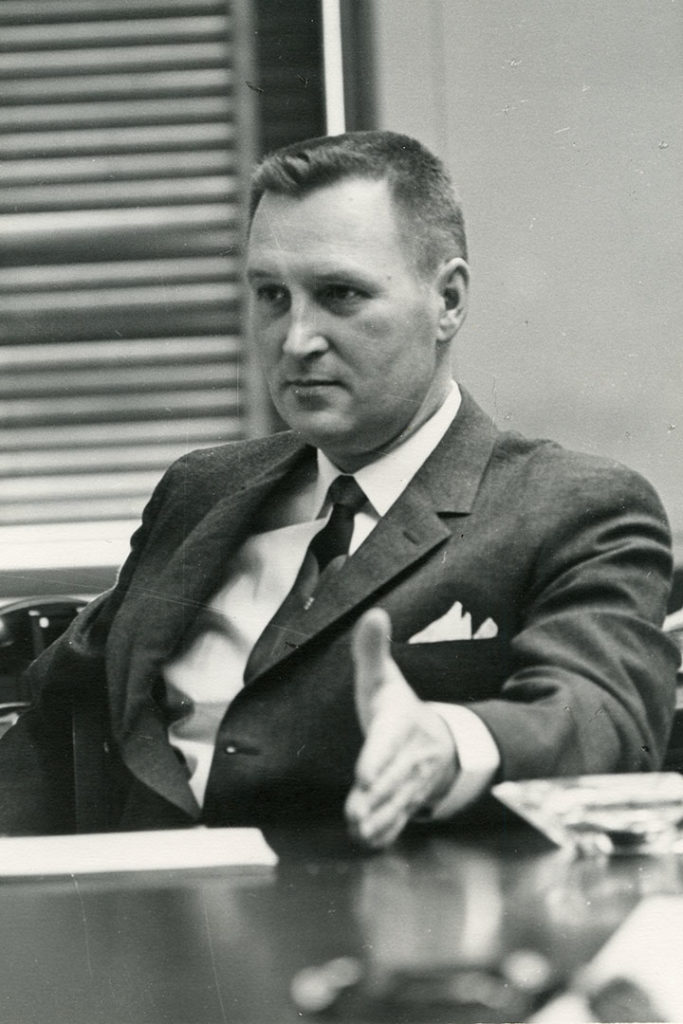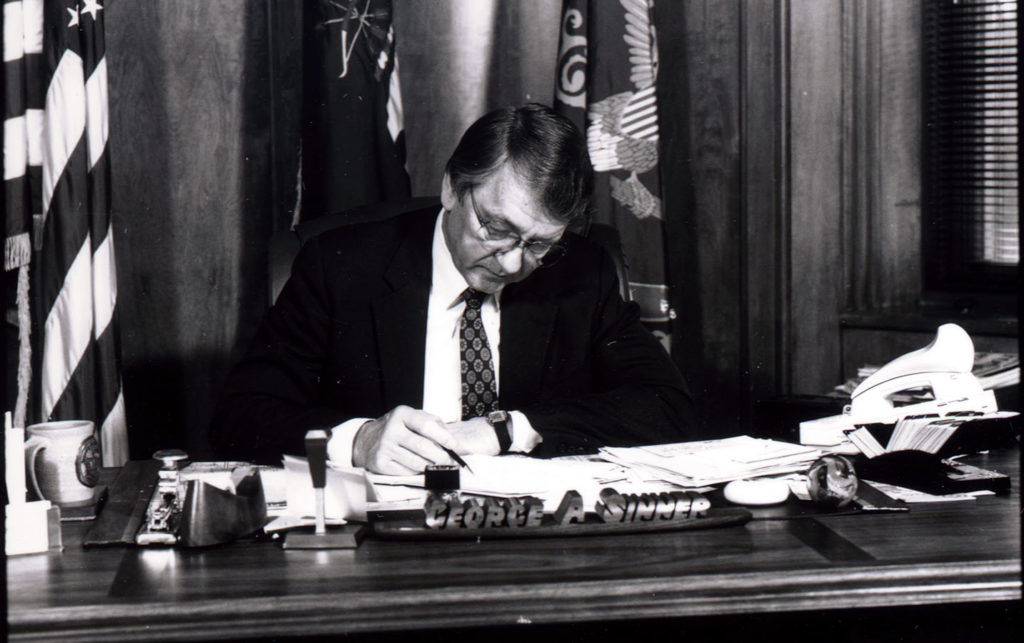After years, even decades, of quiet service, the Bank of North Dakota was sparked back into active life with the election of William Lewis Guy as North Dakota’s 26th Governor. Addressing the North Dakota Legislature in January 1961, the new young governor declared, “The philosophy of lending of the Bank of North Dakota should reflect our faith in the potential of economic development for our own people.” The Bank should have “more latitude in financing industrial development.”

Under Bill Guy’s leadership (via then Bank president Herb Thorndal), the Bank ceased to buy bonds from political subdivisions. Cautiously, the Bank began to make farm loans again after a 28-year hiatus. The mostly-Republican state Legislature fought this initiative, remembering the chaos of delinquent loans and foreclosures of the 1930s. Nevertheless, in 1961 the Industrial Commission directed the Bank to set aside $500,000 for loans guaranteed by the Farmers Home Administration (FmHA). Over time this enabled the Bank to cover the backlog of loans that the federal FmHA had approved in the state. Governor Guy also wanted to create a loan program for beginning farmers. His program would have guaranteed up to 50 percent of these loans. The Legislature rejected the idea on a party line vote.
For the most part, Guy’s call for the Bank to help expand the state’s economy were never implemented because he did not have the support from the other two Industrial Commission members who were from the opposing party. It did plant the seed for the Bank’s potential to impact the lives of North Dakotans.
Tough economic times in the 1980s set the stage for the Bank to embark on its economic development mission.

Governor Sinner took office in 1985 and insisted that the Bank of North Dakota should be engaged in community development. He wanted the Bank to be more than a lending institution. At a difficult time in North Dakota history, the collapse of the late 70s oil boom and a prolonged drought, Sinner wanted the Bank to play a role in the regeneration of rural life. This put him squarely in the tradition of the Bank’s origins and founding mission.
Bank President Joe Lamb determined to set aside a portion of Bank profits to fund specific community development programs. One of these was called PACE (Partnership in Assisting Community Expansion.) The state of North Dakota appropriated $2.7 million to fund small town investments. The Bank worked with local commercial lenders to keep investment loan interest rates low. The PACE program was popular in North Dakota, and it was regarded as a successful public-private partnership for the Bank.
Over the years, other PACE programs have been added to stimulate economic development.

